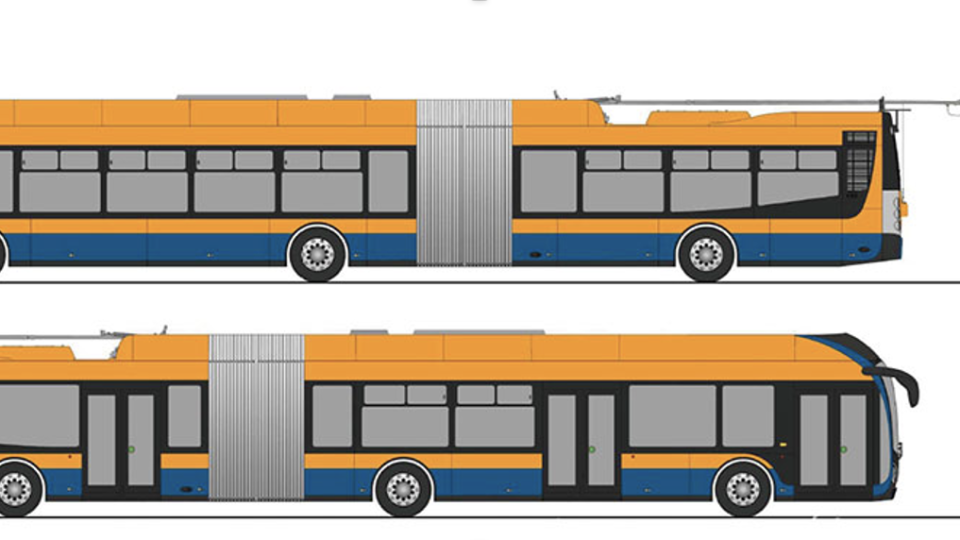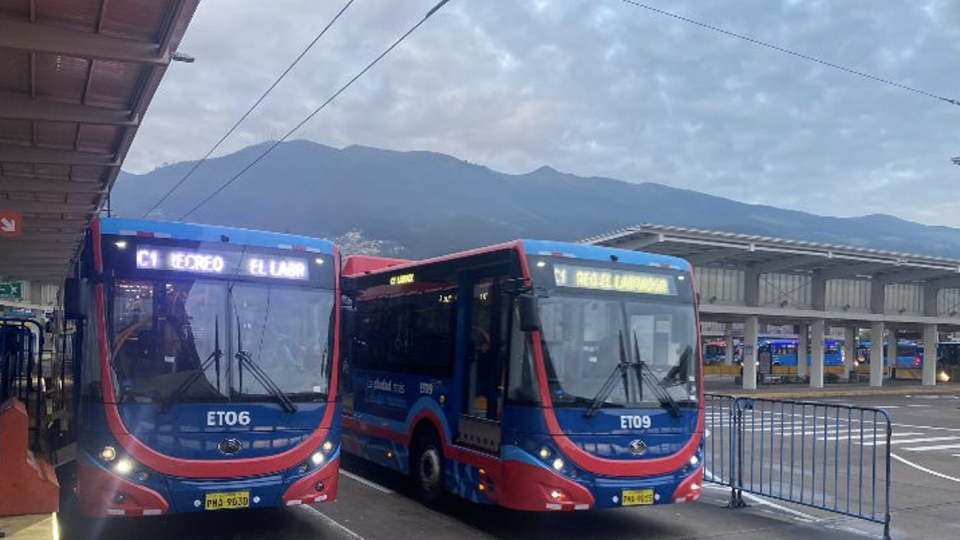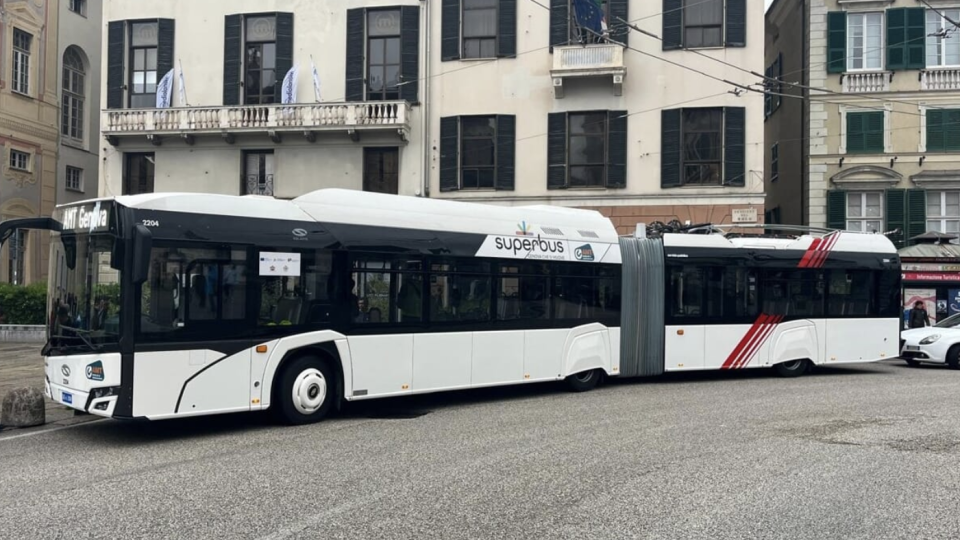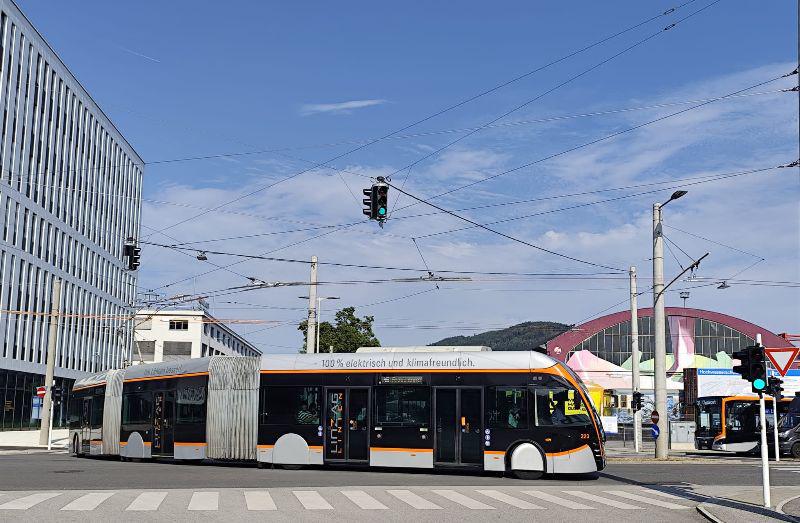302 line extension to Bochum in service. With Variobahn
The year 2023 is the best start for Bochum-Gelsenkirchener Straßenbahnen AG (BoGeStra), a major German transport operator that operates the networks in Bochum, Gelsenkirken and Herne, cities in the North Rhine-Westphalia region of West Germany. After 15 months of construction work, the new 820-metre-long section of tram line 302 went into service on 9 January […]
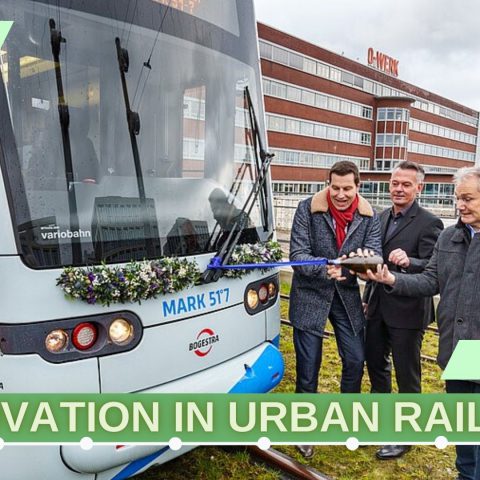
The year 2023 is the best start for Bochum-Gelsenkirchener Straßenbahnen AG (BoGeStra), a major German transport operator that operates the networks in Bochum, Gelsenkirken and Herne, cities in the North Rhine-Westphalia region of West Germany. After 15 months of construction work, the new 820-metre-long section of tram line 302 went into service on 9 January 2023, reaching the urban development area MARK 51°7, located on the area formerly occupied by the Opel factory in the eastern part of the city and currently undergoing urban redevelopment. The ‘innovation district’ is planned to be built on an area of about 70 hectares, which will provide at least 10,000 new jobs, in a wide range of sectors, in addition to the 3,000 jobs already existing today.
The new section branches off from the existing line at the Laer Mitte stop and reaches the O – Verk terminus after the Max Plank Institut intermediate stop. The O-Werk stop is also served by bus line 372 (Ruhr-Universität Bochum – Industriestraße/Werne). The route is double-track and runs mainly on grass. The stops are equipped with timetable displays and a tactile guidance system.
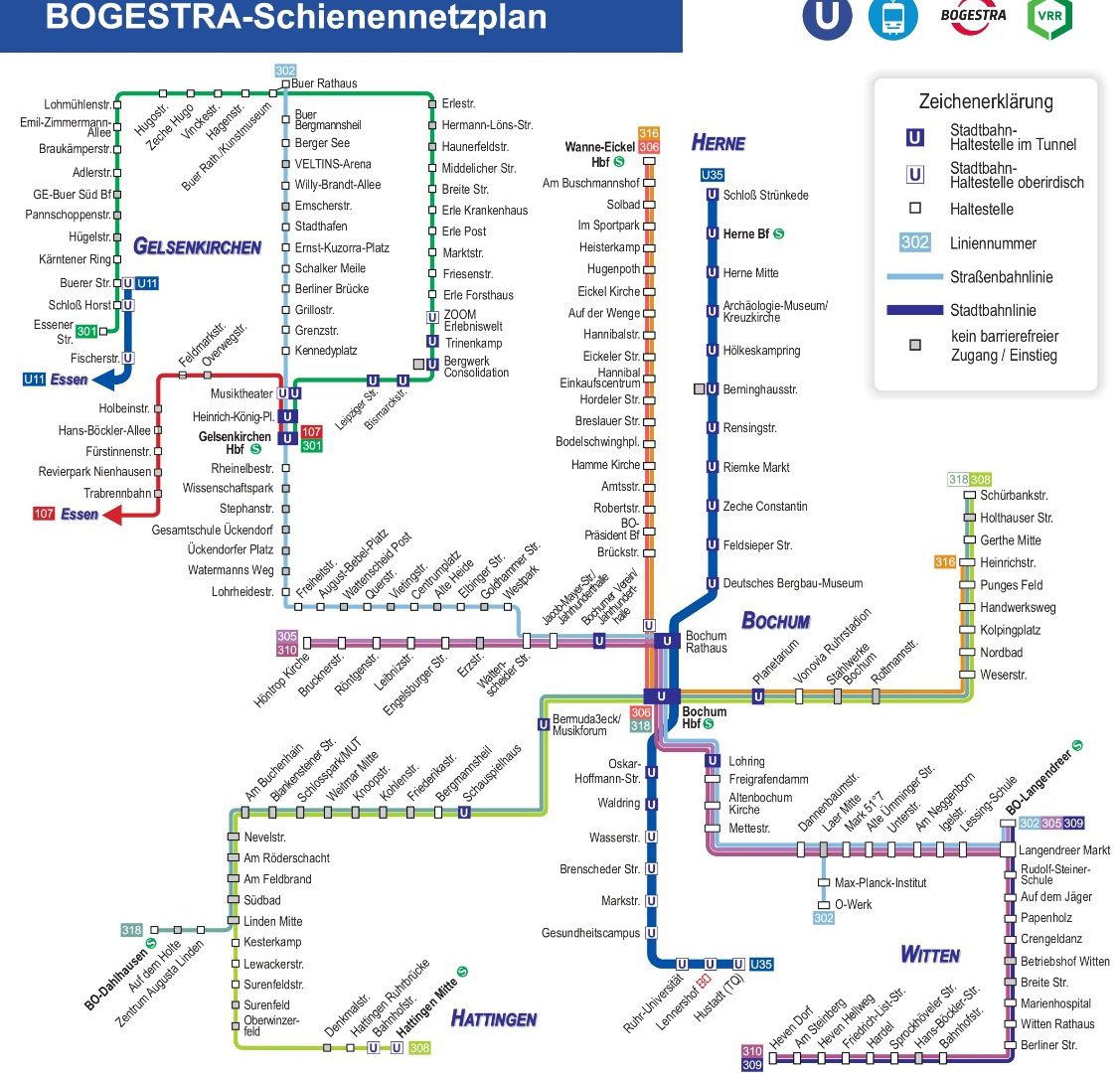
A short but very important extension for the Bochum tramway network, opened in 1894, which serves the cities of Bochum and Gelsenkirken, and has 9 active lines (301, 302, 305,306,308/318,309,310, 316), as well as line 107 from Gelsenkirken to Essen.
The urban centres of Bochum, Gelsenkirken, together with Duisburg, Essen, Herne and Dortmund create a kind of “ urban continuum” in a densely populated region (reaching 18 million inhabitants) in which public transport is strategic, and always striving for constant service improvement. The measures implemented in this case by Bochum are seen in this light.
The service is certainly competitive with passages on average every 15 minutes; the 302 line, on the other hand, has passages every 7 minutes or so. Evening service is also planned (except for a couple of lines), and also night-time in the case of line 306, line 318. With crossings every hour from midnight to 4 a.m. Some lines, such as the 305, 309 and 310 have crossings every 30 minutes, but this does not mean a decrease in the offer, which the particular configuration of the network guarantees is always high. With the exception of lines 301 and 302, and the western end sections of lines 308 and 318, all other lines have overlapping sections. Between the Bochum railway station and Heinrichstrasse, to the east, there are 3 overlapping lines. (308, 316, 318). On these sections, passages are therefore guaranteed every 7.5 to 15 minutes at the most. On the new section of route 302, crossings are every 15 minutes, alternating between the O – Verk terminus and the old Langendreer terminus.
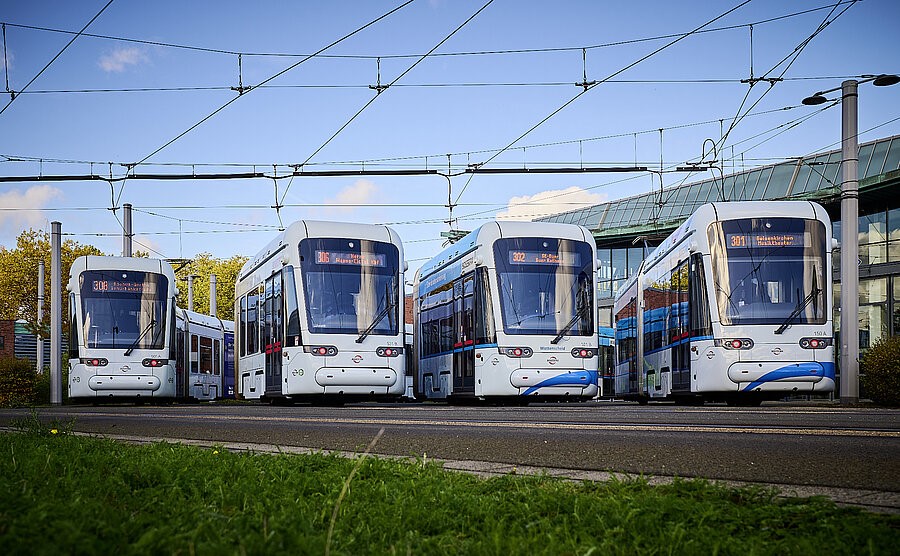
Bogestra also announced the completion of the delivery of the 95 Variobahn trams manufactured by Stadler; the last units were put into service in December 2022, and replaced the older generation of trams, the Duvag M6S/C and MGT6D from the 1970s. Innovative vehicles, the Variobahn trams now make up a large part of Bogestra’s tram fleet. 30 metres long, they are of the modular type, with five bodies resting on three bogies, they are bidirectional, low-floor and equipped with five doors (one with one leaf) on each side; they can accommodate about 180 people, who travel in an air-conditioned and video-monitored environment. The trams are also equipped with a fire prevention system, which is especially necessary on tunnel routes. Compared to the first 45 vehicles delivered between 2008 and 2011 and between 2013 and 2015, the 50 vehicles in the 2015 order were also equipped with WLAN technology, which can be used by passengers. In addition, the seating concept was further developed and the passenger information systems of the trams were redesigned.
by Stefano Alfano




